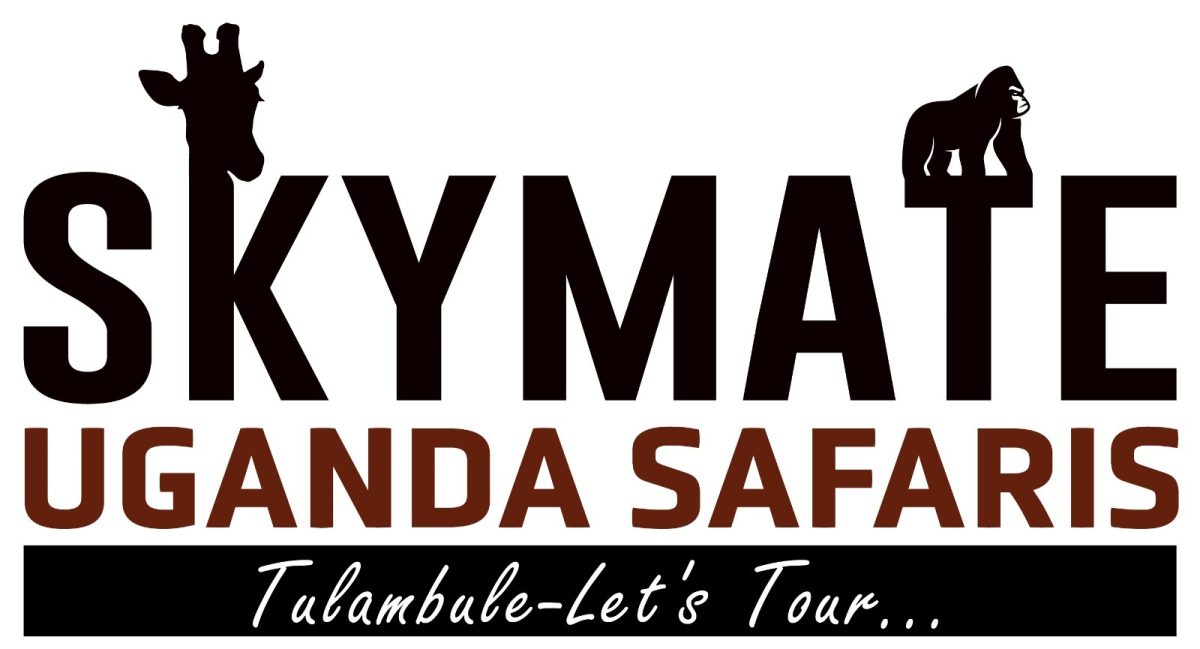When it comes to safari stereotypes, Rwanda is invariably associated with gorilla trekking, but in truth, this tiny nation offers the full African safari adventure. Rwanda is home to Akagera National Park where you can see Giraffes, Zebras, Hippos, Crocodiles, Antelopes and all the Big 5 animals of Africa.
Named after Akagera River, this safari park is the ideal complement to a gorilla trekking tour in Volcanoes National Park or a canopy walk Nyungwe Forest. Akagera is located on eastern border of Rwanda with Tanzania about a 2-hour drive from Kigali.
The Story of Akagera National Park

Akagera was first established in 1934, making it one of the oldest national parks in Africa. Between 1990 and 1994, Akagera was turned into a battleground between the Rwandan Army and the Rwandan Patriotic Front (RPF), a rebel army mostly composed of Tutsi exiles. Much of the park’s area was a no-go zone for civilians.
A major army base was set in Gabiro, on the edge of the park, and the rebel army staged some of the fiercest battles in the area. In the immediate aftermath of the war, little was done to protect wildlife of Akagera. Most of the Rwandan staff, researchers, or conservationists working in parks had either left the country or been killed.
The new government, led by the victorious RPF, prioritized the resettlement of ethnic Tutsi who had previously lived in exile.
Rwanda was and remains a densely populated country, and with little availability of arable land, the government allowed returnees and their estimated 700,000 cattle to settle in Akagera National Park. The returnees converged on the park, putting a big strain on the delicate ecosystem.

In a move to moderate human-wildlife conflicts, returnees were allowed to remain, but in 1997, the size of Akagera National Park was reduced by two-thirds from 2,800 km2 to 1,122 km2. It was one of the biggest reductions in the size of a conservation area in modern African history. But Akagera’s problems did not end there.
Local residents and park officials who worked in Akagera during that time say elephants spent less time inside the new park than outside, where they roamed their historic feeding areas and feasted on new crops.
Setting up conflict, a single elephant can destroy up to a year’s worth of a farmer’s income in one night. Ungulates like topi, buffalo, impala, zebra, and warthogs continued to graze in the same areas as livestock, competing for food.
Lions and buffalo posed a serious threat to cattle and humans alike.

Loss of even a single cow can mean severe economic pain in the surrounding communities, and many responded by hunting or poisoning Akagera National Park’s wildlife until some species were eradicated completely.
Lions, which numbered over 300 individuals before the 1990s, were gone by 2002.
Poachers continued to infiltrate the park borders to pull thousands of pounds of fish out of the area’s many lakes every night.
The last black rhino was seen there in 2007. Faced with a make-or-break moment and a nature reserve that was increasingly becoming a park on paper only, in 2009, the Rwandan government shifted directions.
They signed a 20-year contract with African Parks, a Johannesburg-based non-profit that operates by taking over complete responsibility for the rehabilitation and management of conservation zones.
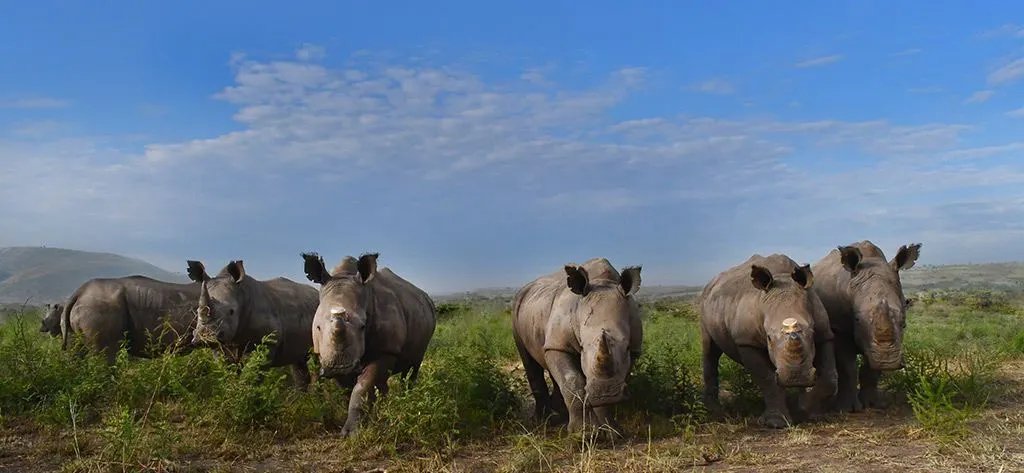
African Parks, along with RDB, a Rwandan government agency, created the Akagera Management Company, a joint not-for-profit business to oversee the park’s rehabilitation.
Thanks to considerable investment in the park’s infrastructure and security, existing wildlife populations began to recover, bolstered by ambitious reintroduction programmes. Tourist numbers, both local and international, grew in leaps and bounds, and by 2019, Akagera National Park was 90% self-financing.
Most importantly, community involvement has always been a fundamental tenant of African Park’s approach to managing all the parks under their guardianship, and Akagera is no different.
Today, 300,000 people on the park boundary directly benefit from its existence, while educational programmes and support for community enterprises have reshaped local perceptions.
Akagera National Park today is the proof that responsible tourism and sustainable conservation bring long-term security to both people and wildlife.
Animals in Akagera National Park
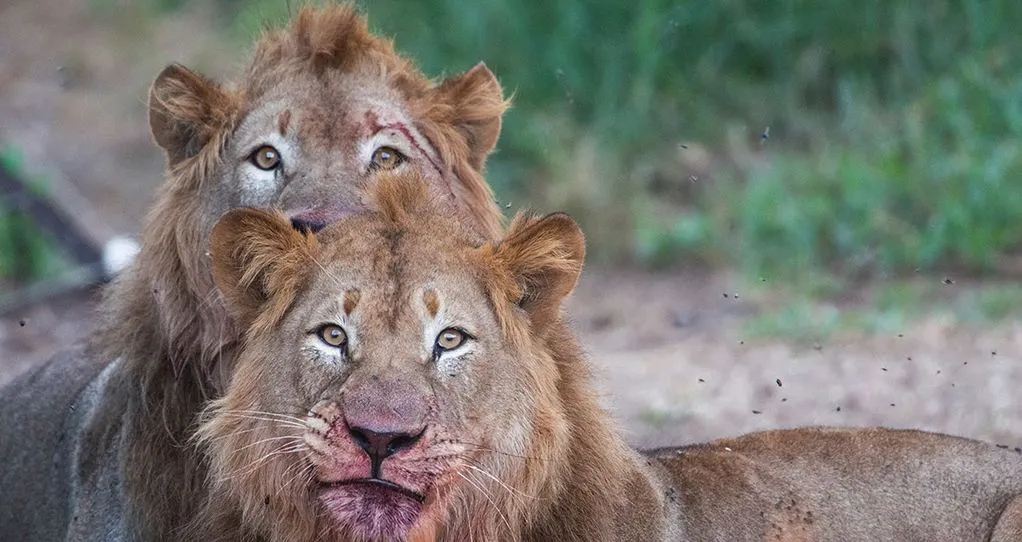
Wildlife in Akagera National Park is varied.
Carnivores in Akagera are limited to rarely seen leopards (about 150 individuals) and hyenas as well as genets, servals and jackals. And lions?
In 2015 seven individuals were flown from South Africa to Rwanda in a chartered plane and transported to Akagera National Park.
There are now more than 50 lions in the park. Eighteen black rhinos were also introduced to Akagera National Park in 2017 and 30 white rhinos in 2021.
Of the other large ‘trophy’ animals there are an estimated 90 African bush elephants in the park, which are quite commonly seen.
Buffalo are also present in reasonably healthy numbers (about 3000), and there are masses of hippos and Nile crocodiles in the lakes.
Antelope and other plains game are well represented, though herds tend to be small and the animals rather skittish.
Common safari staples include impala, topi, zebra and waterbuck, as well as the majestic but rare roan antelope and the diminutive Oribi.
Maasai giraffes have been introduced and are faring well.
- Leopards
- Hyenas
- Genets
- Servals
- Jackals
- Lions
- Black rhinos
- White rhinos
- Elephants
- Buffalo
- Hippos
- Nile crocodiles
- Impala
- Topi
- Zebra
- Waterbuck
- Roan antelope
- Oribi
- Maasai giraffes
Birds in Akagera National Park Rwanda
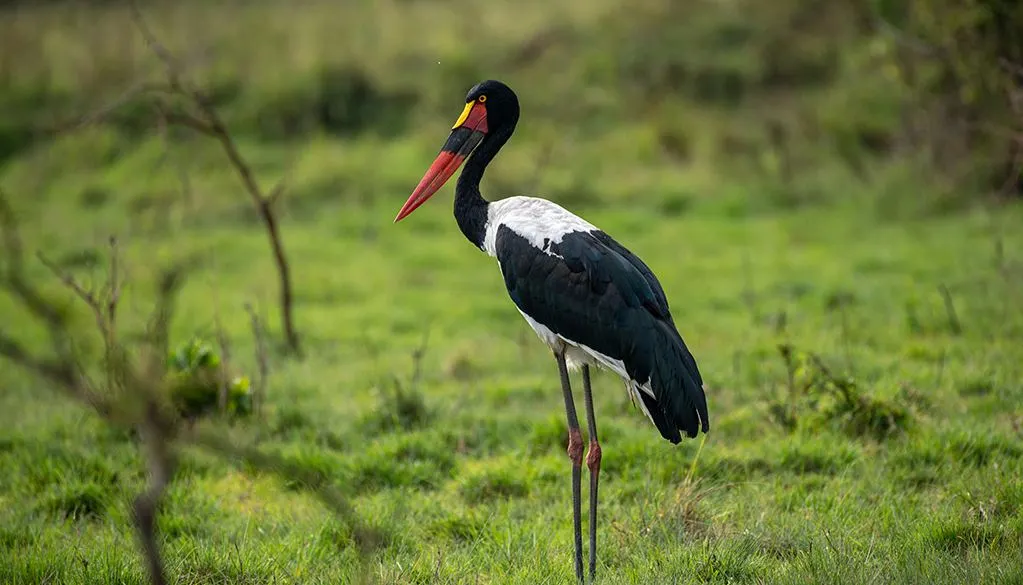
Akagera National Park offers fantastic bird watching.
Of over 480 bird species recorded, about 100 species are not found in any other protected area in Rwanda.
Akagera National Park is Rwanda’s second most important birding site after Nyungwe Forest National Park, and the two parks complement each other perfectly – most birds recorded in Rwanda can be found in one of the parks, Birding is excellent around the banks of Lake Ihema.
The highlight is a small island where thousands of birds, including cormorants, darters, herons, ibises and African openbills, roost. Birding species include;
- Amur falcon
- Beaudouin’s snake eagle
- Black-crowned night heron
- Blue-headed coucal
- Blue-spotted wood dove
- Booted eagle
- Brown-chested lapwing
- Carruthers’s cisticola
- Caspian plover
- Denham’s bustard
- Double-toothed barbet
- Grasshopper buzzard
- Lesser jacana
- Marsh owl
- Marsh tchagra
- Martial eagle
- Moustached grass-warbler
- Papyrus gonolek
- Pennant-winged nightjar
- Red-faced barbet
- Ross’s turaco
- Rufous-bellied heron
- Shelley’s francolin
- Shoebill
- Sooty falcon
- White-winged swamp warbler
- Yellow-bellied eremomela
- Yellow-throated leaf-love
Activities in Akagera National Park Rwanda

Safari enthusiasts can indulge themselves in the Akagera National Park! Due to the wide variety of landscapes, many forms of safari are possible. View all options below:
1. Day Game Drive
Akagera National Park is ideal for long safaris with a 4×4 land cruiser or a comfortable minibus.
You will explore all corners of the national park by vehicle in search of wild animals. The game drive safaris usually take place early in the morning or late in the afternoon.
Then the temperatures are most pleasant and the animals are most active, which means the chance of a successful safari is greatest.
The safaris in the south of Akagera National Park are characterized by seeing giraffes, rhinos and special birds.
On the north side of the park there are extensive savanna plains with lions, buffalo, zebras and leopards. The safaris are always guided by a professional ranger who knows the park like the back of his/her hand.
2. Night Game Drive
The night game drives in Akagera National Park usually start just before sunset.
This safari is guided by a ranger who specializes in spotting nocturnal animals. He takes a seat at the front of the car, on a specially made seat.
He will try to spot the wild animals with a large lamp. During these safaris, you can spot animals such as leopards, hippos, bush babies and small feline species.
3. Safari Boat Cruise
On the south side of Akagera National Park there are beautiful lakes, the largest of which is Lake Ihema. It is possible to take a boat cruise on this lake.
Boat trips are scheduled four times per day at 7.30am, 9am, 3pm and 4.30pm. Non-scheduled, private, trips can also be arranged between 10.30am to 1.30pm for an hour.
The focus is on spotting hippos, crocodiles, drinking animals along the waterfront and many bird species. The boat safaris are carried out in small groups of a maximum of 10 people.
4. Specialized Birding tours
Bird lovers can be assigned a ranger in Akagera National Park who is fully specialized in the 482 bird species that live in the park.
Together with this ranger, you spend a day looking for special bird species and explanations will be given about this.
This safari will mainly take place in the southern region of the park. Because of the swampy swamp area and the many lakes, most birds are spotted there.
5. Akagera Walking Safari
This Akagera National Park walking safari will expose you to nature’s fine detail and the thrill of moving among Africa’s iconic Big 5 and other large mammals on foot in a remarkable, awe-inspiring landscape.
6. Behind the scenes tour
Visitors to Akagera National Park can even opt for the “behind the scenes” tour of the park headquarters, where they can talk to park officials and learn more about the strenuous business of keeping a national park operational.
7. Cultural community experiences
Cultural community experiences near Akagera National Park also offer the opportunity to learn more about Rwanda’s remarkable people while contributing to local enterprises.
Learn about milking cows and traditions around cattle and milk on a farm in the Eastern Province; or spend time with banana beer and honey artisans to see how local products are made. All revenues generated by these visits are shared with members of the communities you visit.
Akagera National Park Accommodation
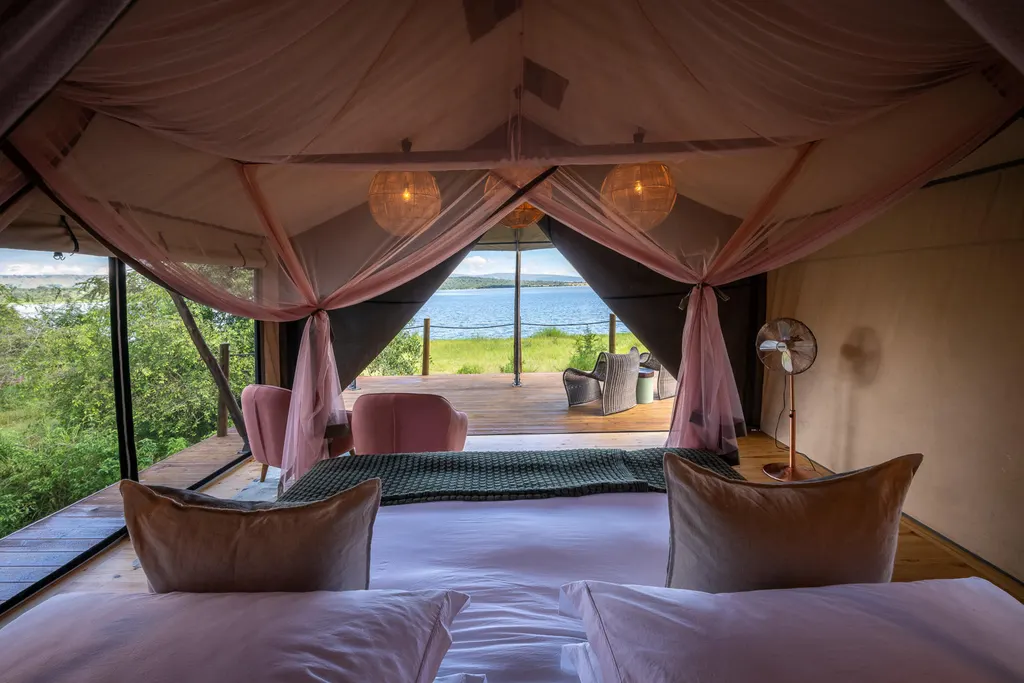
There are a few high-end and mid-range accommodation options inside Akagera National Park as well as public campsites for the budget traveller.
1. Magashi Camp
The upmarket Magashi Camp is situated within an exclusive wilderness in the remote northeastern corner of Akagera National Park. The camp is ideal for discerning safari travellers looking for the best of amenities and facilities.
It boasts of frequent sightings of wildlife around the locale.
Choose from one of the 8 lakeside tents that have rollable canvas sides so that you can immerse yourself in the beauty of The large bed comes with mosquito netting, while the deck outside has a small seating area to revel in the fabulous vistas.
2. Ruzizi Tented Lodge
If you are looking for an authentic tented safari experience in Akagera National Park, opt for Ruzizi Tented Lodge as your deluxe-priced accommodation.
Following eco-friendly principles in both building construction and operation, the lodge offers just 9 tents for discerning travelers, including a treetop suite.
Ruzizi is crafted from natural materials gathered locally and uses solar energy for power.
It’s located beside the papyrus-filled marshes of picturesque Lake Ihema, where you can watch hippos wallowing in the shallow water and crocodiles sunning themselves, their jaws agape.
Enjoy walking the boardwalks to access the lounge, dining area, and viewing deck, while the sounds of the bush fill your wilderness holiday with tranquility.
3. Akagera Game Lodge
A value vacation accommodation, Akagera Game Lodge is perched atop a ridge that offers panoramic views of Akagera National Park.
Featuring a series of 2-story motel-like structures with stone detailing, Akagera Game Lodge includes has a with an upper-level bar and 2 swimming pools, one of which is suited for guests with children.
In addition to its 62 rooms and suites, the lodge also offers 2 different rondavel cottages, one with three bedrooms and the other with two.
These cottages include a kitchenette and dining area. This is a child-friendly value lodge that can provide high chairs and cribs upon request.
4. Karenge camp
Karenge Bush Camp is a good mid-range option in Akagera National Park, offering furnished tented accommodation.
Perched on a ridge overlooking the wildlife-rich Kilala Plains below, Karenge Camp is an off-the-grid getaway for safari enthusiasts seeking privacy and solitude.
The camp is conveniently situated a short game drive from the north (exit only) gate to park – near productive game-viewing areas.
It is a rustic fully-catered bush camp featuring 6 tented chalets. Each tent has a private but separate outdoor bathroom and loo located a few steps from the tent.
5. Akagera Campsites
For the budget traveller, there are four public campsites:
- Shakani on the shores of Lake Shakani (where fishing is permitted)
- Mutamba at the highest point in the park
- Muyumbu overlooking Lake Ihema and Lake Shakani,
- Mihindi near the shores of Lake Mihindi
FAQs about Akagera National Park
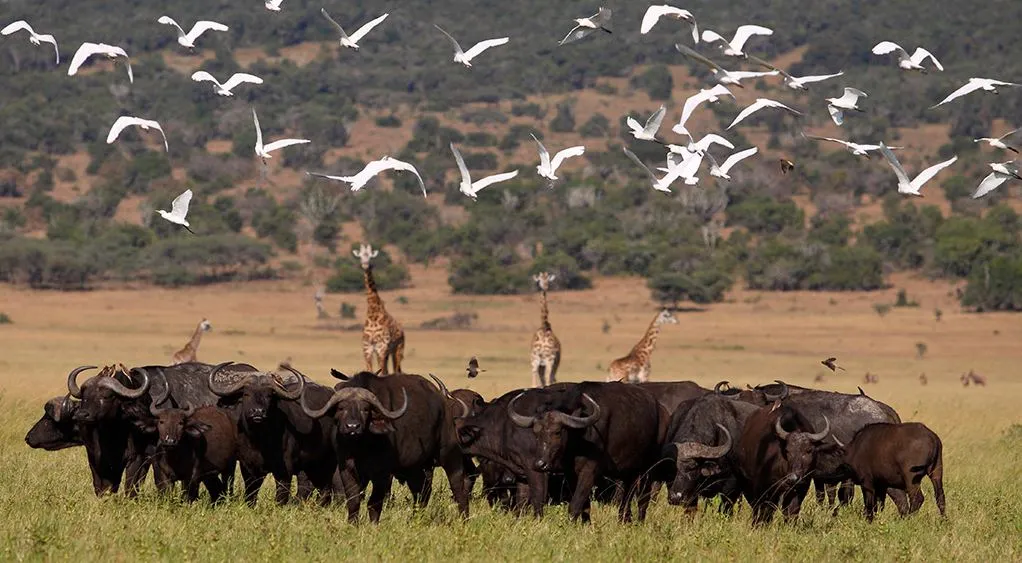
1. When is the best time to visit Akagera National Park?
Though Akagera is accessible year-round, the best time to visit is during the dry season, from June until September, when the wildlife viewing is at its best and rain is less likely to be disruptive.
